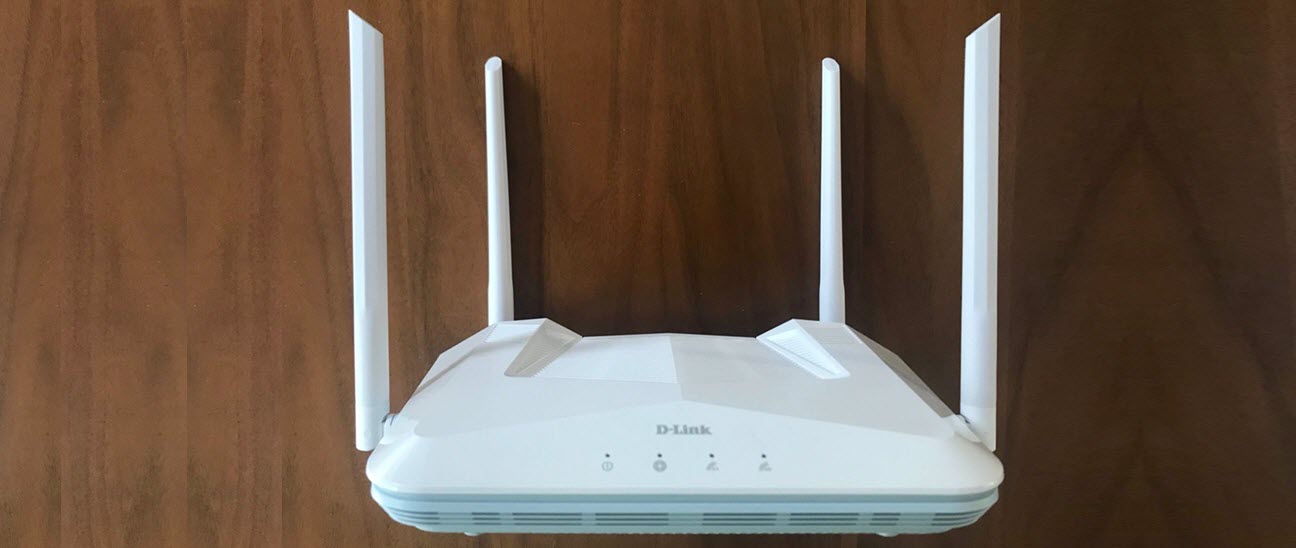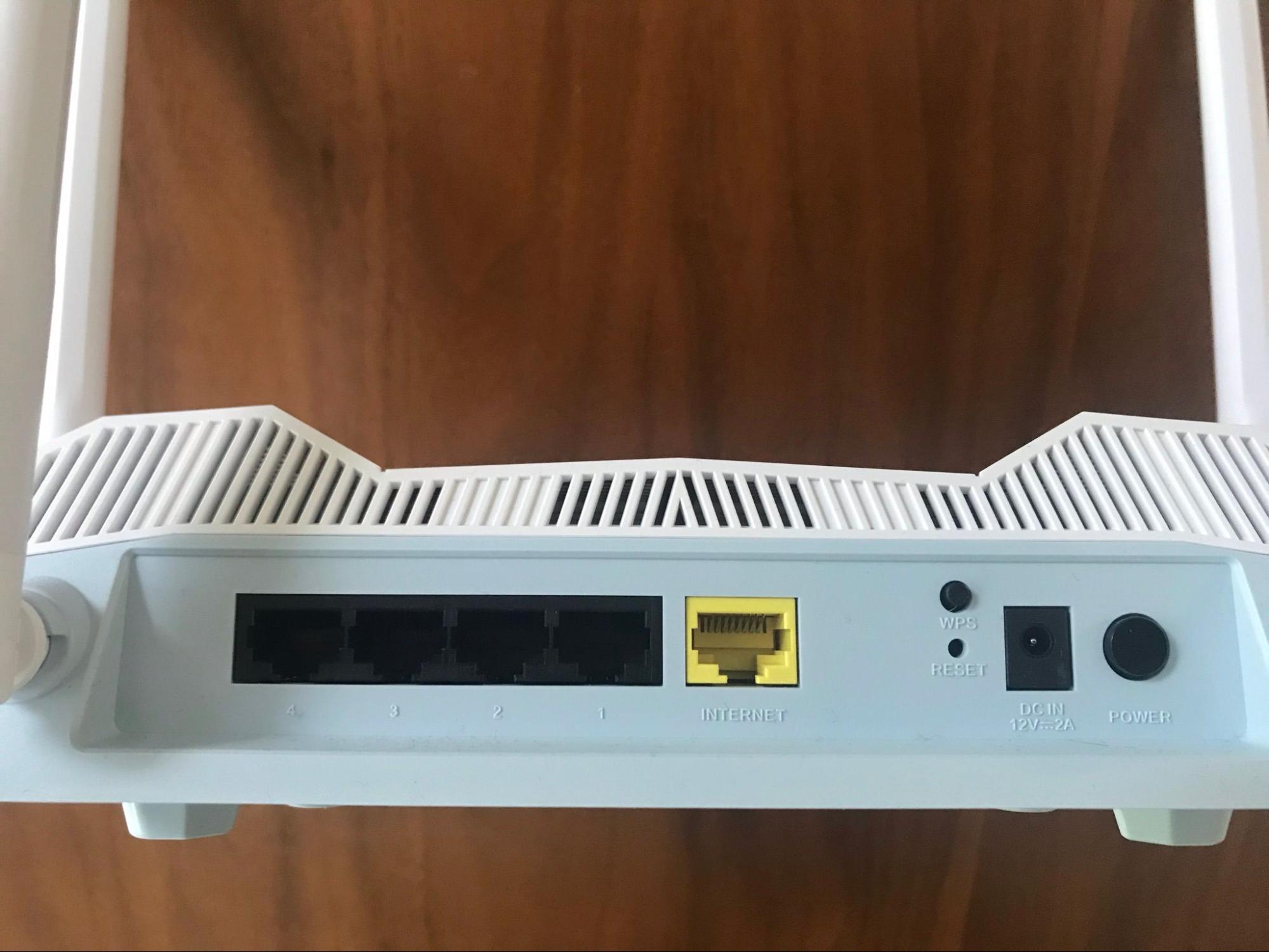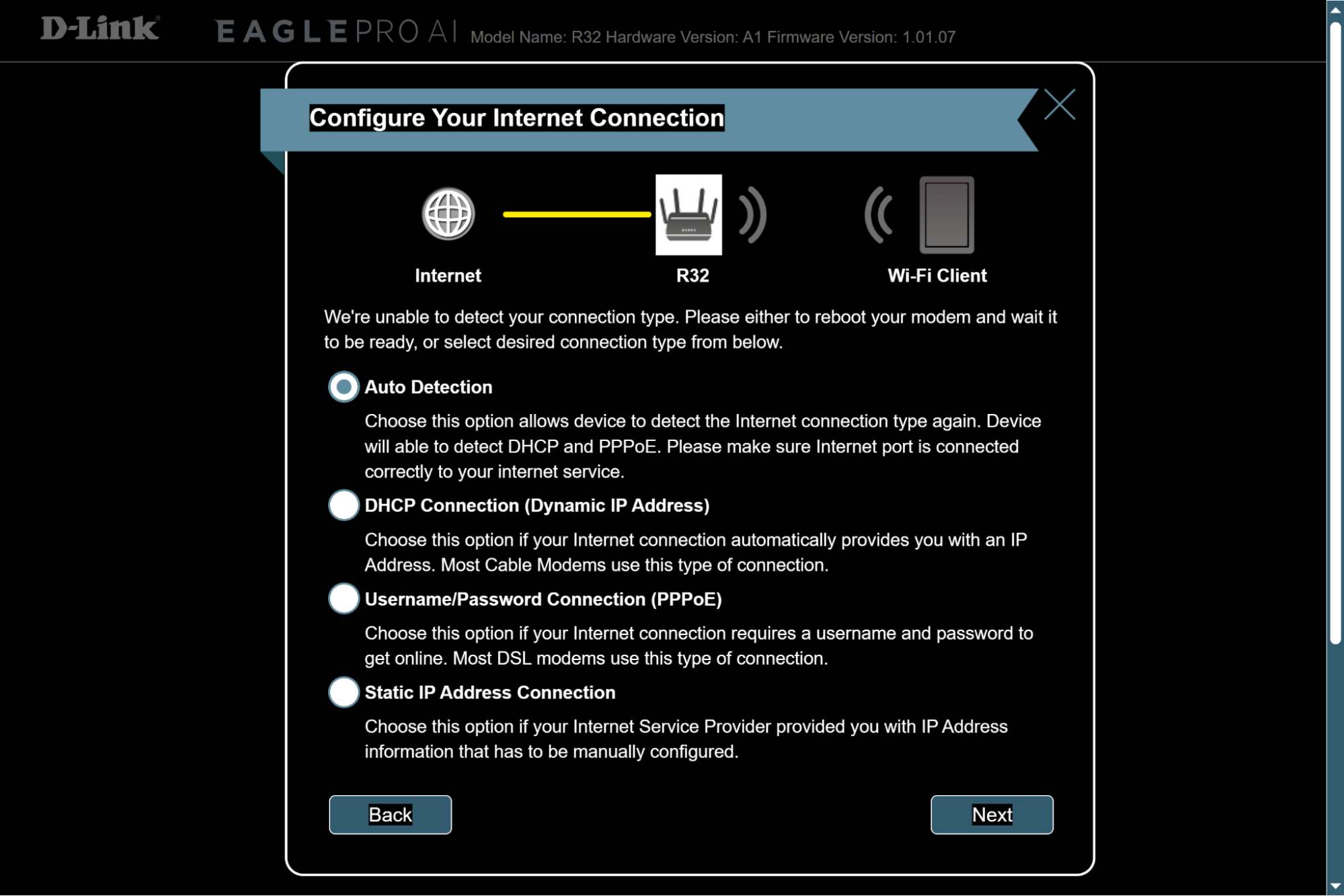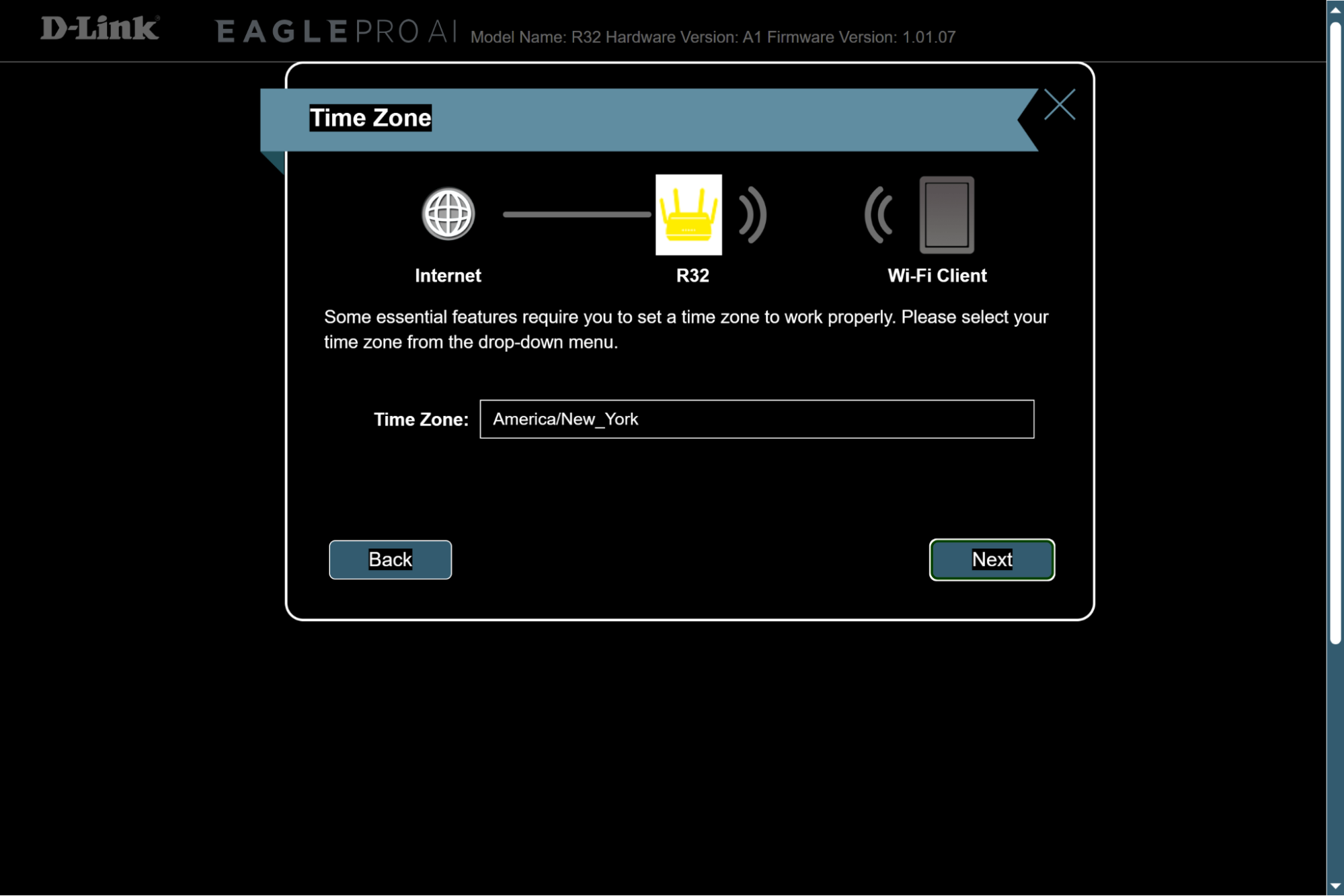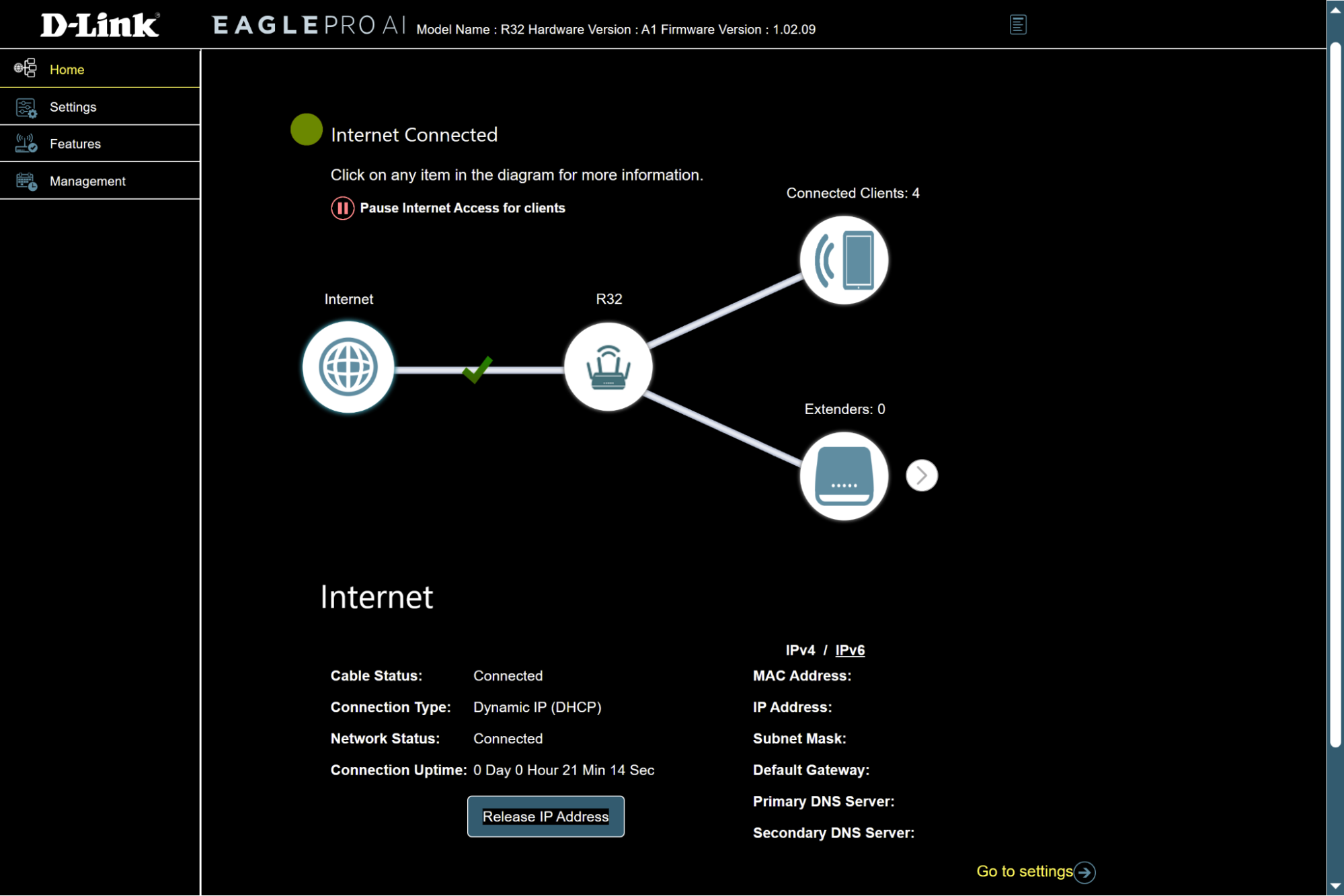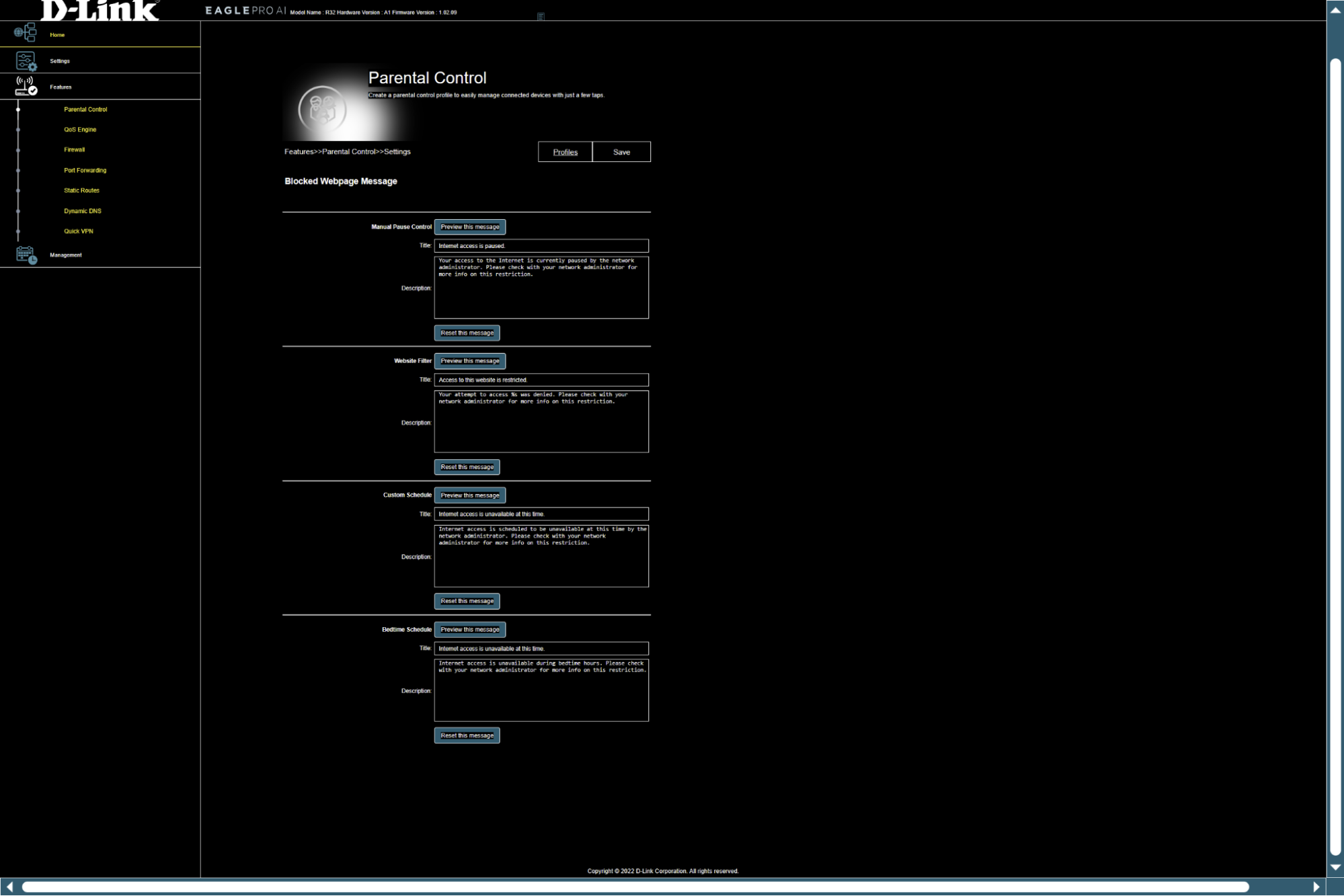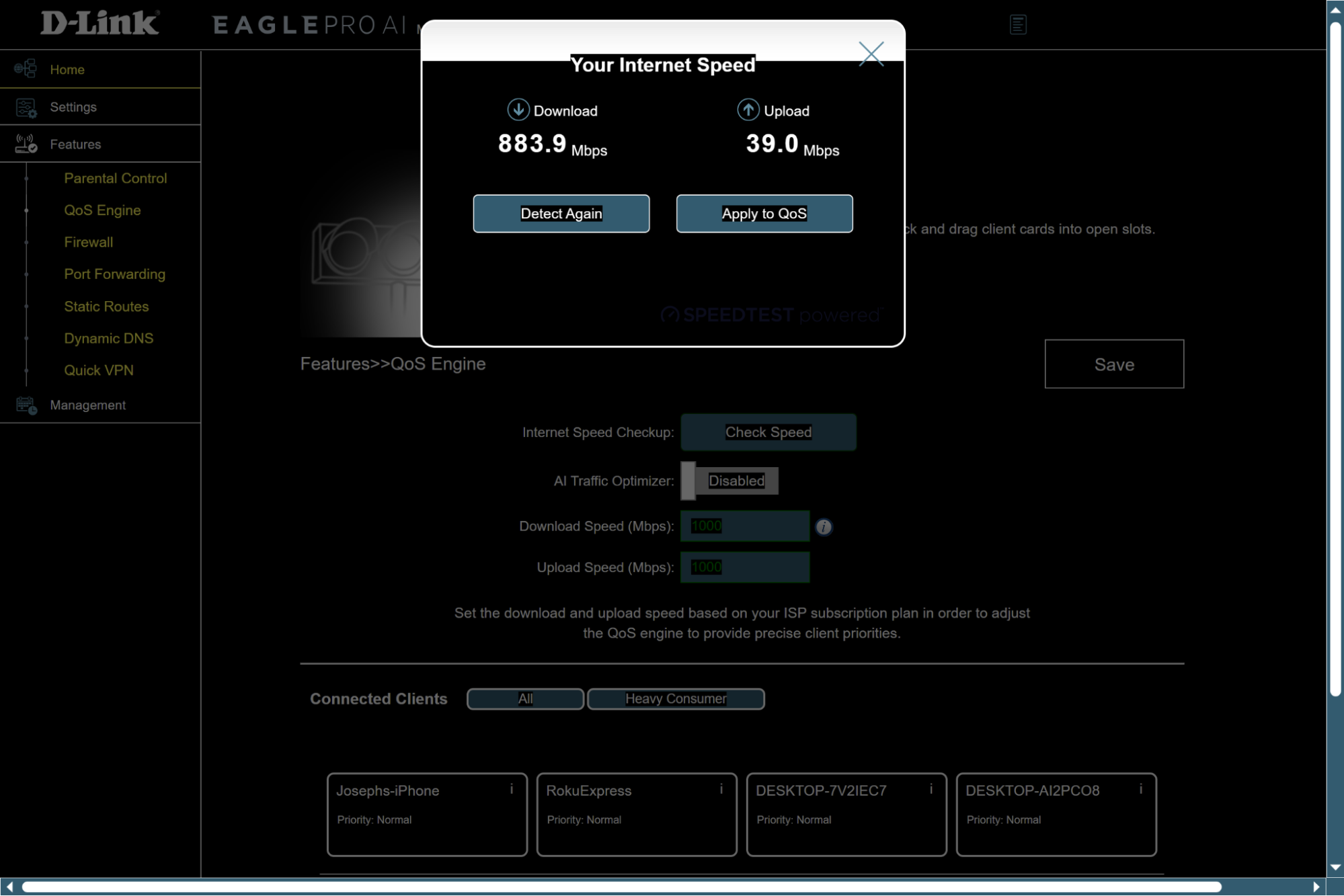Tom's Hardware Verdict
The D-Link AX3200 Smart Router R32 has a lot of good features and the fastest Wi-Fi 6 speeds under uncongested conditions. However, weak performance at distance with congestion and annoying software issues hold it back.
Pros
- +
Superior throughputs at 5 GHz in close-range testing and uncongested testing
- +
Low latency
- +
Custom scheduling and messages for parental controls
Cons
- -
Long, burdensome setup process
- -
Device admin password limited to 15 characters
- -
Low throughput at distance when network is congested
Why you can trust Tom's Hardware
D-Link’s AX3200 R32 Wi-Fi 6 router promises better performance than its competitors, thanks to its high-gain antennas, beamforming technology and AI-driven software optimizer. And, under the right circumstances, it is noticeably faster than other routers in its class. The $100 (at press time), R32 also features a unique design and detailed parental controls.
However, the R32 also has some very frustrating trade-offs. In our tests, the router offered superior throughput at 5-GHz without any network congestion. But, when we had four other devices streaming videos, transfer rates suffered at far distances (near were still ok). The setup process for this router was also over-long and annoying. So you’ll have to take those issues into account.
Design of D-Link AX3200 Smart Router R32
The physical look and feel of the D-Link AX3200 Smart Router R32 is different from a lot of routers on the market today. Many attempt to be slicker than thou, trying to fit right in with an archetypal gamer’s “LEDs against black-on-black” aesthetic. The D-Link R32 is more homey.
While it does eschew a boxy appearance in favor of slopes, angles, and v-shaped vent patterns, the colors are lighter and tepidly suburban—the top half in beige, the bottom half in a grayish teal. The effect is one of comfortable datedness. It is something that would look simultaneously right at home and state of the art next to your Compaq Presario circa 2001.
We’re being colorful here, but we’re not especially complaining. The black-on-black aesthetic that predominates the router market gets boring after a while. Sure, the D-Link R32 rather represents the antithesis to the super-sleek look of the Asus RT-AX1800S, but there is something charming in its dated hominess-cum-homeliness.
Speaking more practically, the back of the D-Link R32 features four Ethernet ports, one WAN port, a WPS button, a recessed pinhole for a reset button, and a power button. Moreover, the D-Link R32 is quite small. It measures 8.98 x 6.26 x 2.43 inches and weighs just under a pound.
Specifications of D-Link AX3200 Smart Router R32
| Operating Frequency | 2.4 GHz / 5 GHz |
| Data Rates | 2.4 GHz: Up to 800 Mbps; 5 GHz: Up to 2,402 Mbps |
| Ports | (4) gigabit Ethernet ports, (1) gigabit WAN port |
| Encryption | WPA/WPA2 -Personal, WPA2-Personal, WPA2/WPA3-Personal, WPA3 Only without WPS |
| Wi-Fi Technology | MU-MIMO, OFDMA, Beamforming, 1024-QAM |
| Dimensions | 8.988" x 6.260" x 2.437" (not counting antennas) |
| Weight | 0.98 lbs. |
Setup of D-Link AX3200 Smart Router R32
We are pleased to see that the D-Link AX3200 Smart Router R32 offers multiple options for setup. If you don’t want to go the traditional route, you can either download the Eagle Pro AI app from the App Store or Google Play, or you can scan a QR code provided with the Quick Installation Guide.
Get Tom's Hardware's best news and in-depth reviews, straight to your inbox.
This brings us to the Eagle Pro AI app—D-Link’s “smart” offering that claims to monitor and optimize Wi-Fi performance and traffic (for instance, prioritizing video streaming while deprioritizing file transfers). It can also be used to set up a mesh network with other D-Link devices. (Mesh support seems to be an increasingly popular offering among Wi-Fi 6 routers—as we’ve seen, for instance, with the Asus RT-AX86U). Moreover, the D-Link R-32 is integrable with both OK Google and Alexa.
For our purposes, we stuck with traditional Wi-Fi setup via a laptop. And the setup was quite fussy and burdensomely long.
First, network auto-detection did not work. We had to manually select DHCP.
Then we had to read (or “read”) and agree to the rambling terms of service.
Then we had to make clear that we were using the D-Link R32 as a true router and not as a signal extender.
Then came the real meat of the setup process when we had to select our device admin password.
Great. That’s why we’re here, after all.
But this too was frustrating—for it demonstrated that the device security on the D-Link R32 leaves something to be desired. When trying to set up our admin login credentials, our proposed password was rejected for being…too secure.
It turns out that the D-Link R32 allows passwords to be no longer than 15 characters. Security professionals, for what it’s worth, commonly advise that passwords be at least 16 characters in length.
Next, we had to manually select our time zone.
Then we had to choose whether or not we wanted automated updates.
Then we had to wait out a three-minute countdown timer before we were allowed into the control panel.
Overall, it’s not the most seamless setup process we’ve experienced.
Features of D-Link AX3200 Smart Router R32
The D-Link R32 offers a number of standard and near-standard features—including port forwarding, VPN routes, guest-network setup, firewalls with rule setting, parental controls, and integration with a cloud service (D-Link Cloud). This latter functionality requires the Eagle Pro AI app, however.
QoS prioritization is available through either manual inputs of internet speeds or automatically with an internal speed testing function (see below). From there, it is supplemented with an AI traffic optimizer.
The parental controls allow for up to 12 profiles. They are nicely flexible. They include website filters, a manual pause, regular scheduling (i.e., a “bedtime schedule”), and a custom schedule. For added utility and/or fun, for each of these subfeatures separately, the administrator can customize the message that will appear to the user when they face blocking.
Performance of D-Link AX3200 Smart Router R32
Like some other routers do, the D-Link AX3200 Smart Router R32 offers its own assessment (powered by Ookla) as to internet speeds—ostensibly for the purpose of applying this information to the QoS feature. When we tried this out, we got a download-speed result of 883.9 Mbps.
This is presented as but an interesting side note; we have our own methodology.
We conducted tests repeatedly throughout the course of three weekdays in a single-family house with a 1,200-Mbps connection, using a laptop with an Intel WiFi 6 AX201 160MHz network adapter as the client and another PC, attached via Ethernet, as the server to receive traffic.
We used iPerf to test throughput and ping to test latency. The numbers we see on iPerf on all Wi-Fi 6 routers are in the 250 to 430 Mbps range on the 5-GHz band so that’s what you can expect in the real world
Four sets of tests were conducted:
Near uncongested: Testing laptop approximately 6 feet away from the router, no substantial traffic being carried across other devices
Far uncongested: Testing laptop approximately 25 feet away from the router, no substantial traffic being carried across other devices
Near congested: Testing laptop approximately 6 feet away from the router; videos streaming on four devices throughout the house
Far congested: Testing laptop approximately 25 feet away from the router; videos streaming on four devices throughout the house
We could not locate anywhere in the portal/control panel to switch over to any 2.4-GHz band or otherwise make a 2.4 GHz available. Even making a guest network available was restricted to the 5-GHz band. We tested on 5 GHz accordingly.


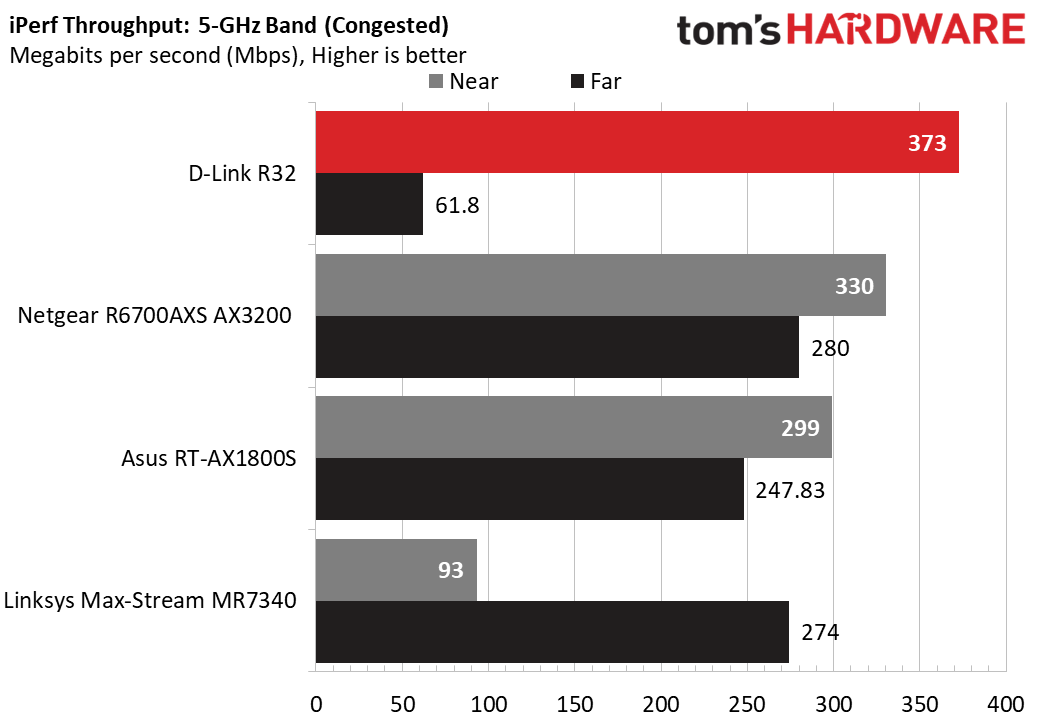
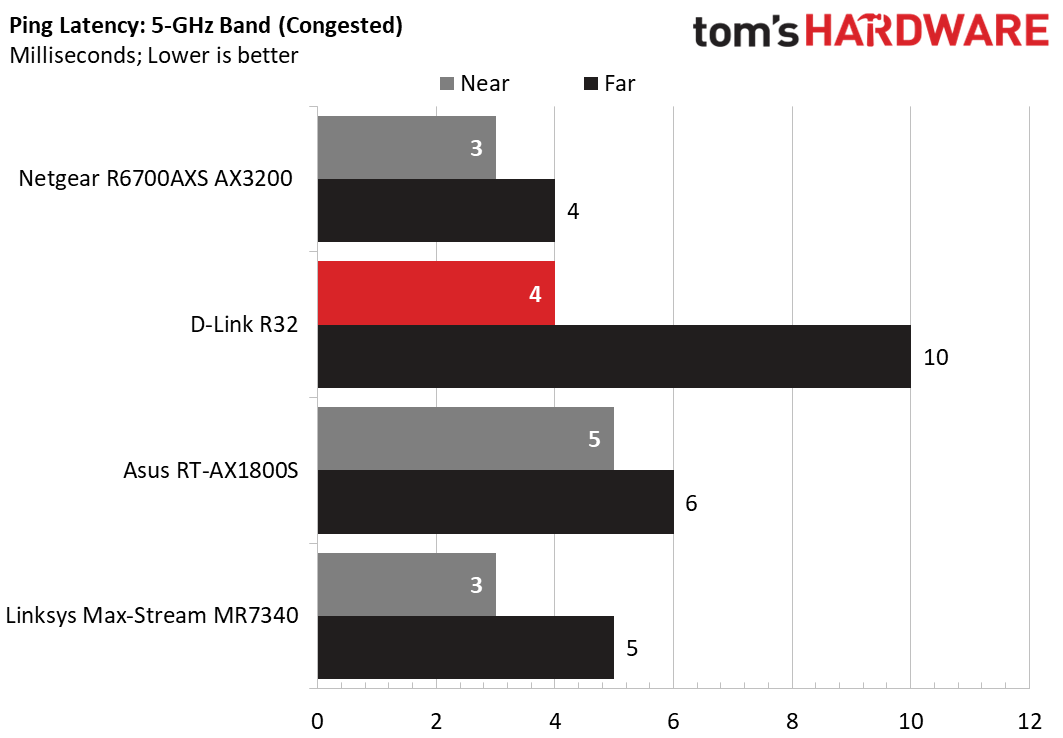
Compared to every other affordable (and even somewhat less affordable) Wi-Fi 6 router we have tested recently, the throughput results for the D-Link seem to be largely superior. Additionally, latency remained low throughout our testing.
The one sore spot here is that of our congested-traffic tests conducted at a distance. Here, the D-Link R32 put up the worst average throughputs we’ve seen in our recent testing. (Indeed, in one particular set of iPerf tests, we saw throughput as consistently low as about 10 Mbps.) The next-lowest performing router in our “far-congested” test was the Linksys Max-Stream MR7340.
This is a shame. The rest of the router’s performance is quite good. Apparently, the D-Link R32 can handle distance well and can handle traffic congestion well—but in our testing it seemed to have problems with both simultaneously.
Bottom Line
The D-Link AX3200 Smart Router R32 is a budget-oriented Wi-Fi 6 router with a lot of positive qualities, but some flaws that hold it back. Its setup is long and obnoxious, its maker’s approach to device security appears substandard insofar as it has a restrictive character limit on passwords and it tested poorly on distance-plus-congestion.
While not quite as fast when the network is uncongested, the Netgear R6700AX AX3200 offers superior distance performance under load, along with simple setup. Asus RT-AX1800S is our top all-around Wi-Fi 6 router pick, because of its strong combination of features, solid performance and low price. However, folks with smaller homes and a need-for-speed might find the D-Link AX3200 Smart Router R32 to be a stronger mix of performance and features for the money.
Joe Stanganelli is a freelance writer for Tom's Hardware, specializing in router reviews. His expertise allows him to provide insightful and detailed assessments of the latest networking technologies and products.
